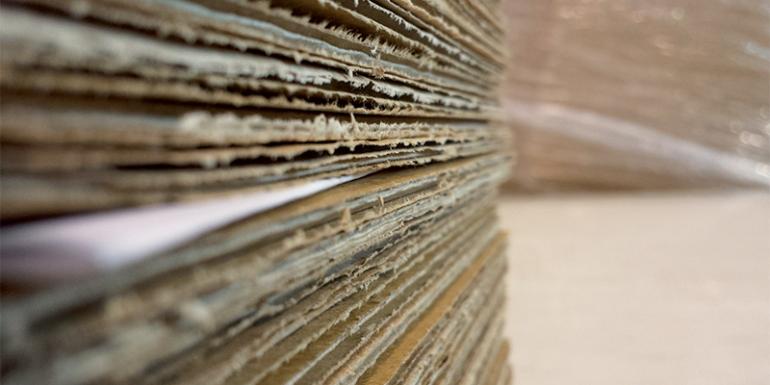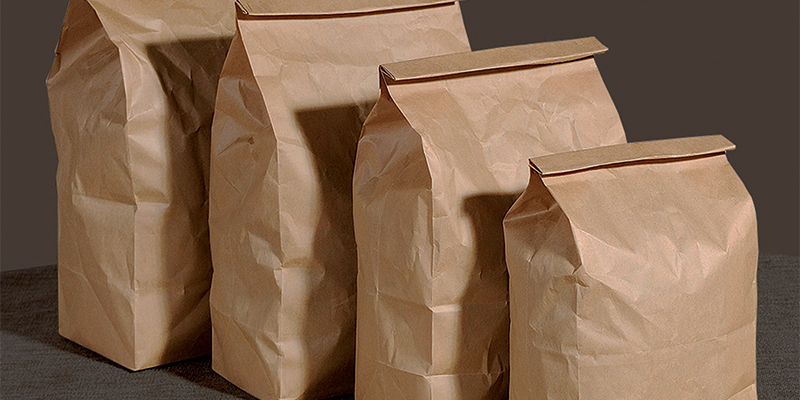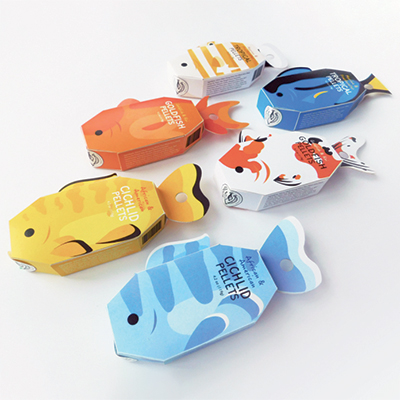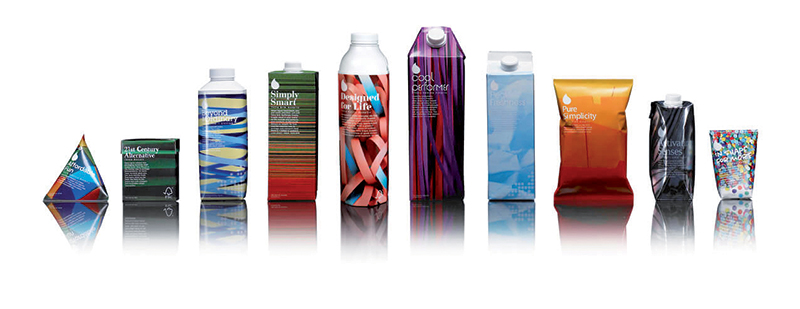Cellulosic packaging – Data 2019

Used in almost all sectors of manufacturing for primary, secondary, or transport packaging, paper and cardboard packaging represent about a third of the national packaging sector, both in terms of production and turnover. Segment facts and figures.
Barbara Iascone
Istituto Italiano Imballaggio
In the European Union of 28 countries, the converting paper converting industry registers stable production in terms of weight compared to 2018. Turnover decreased slightly (-1.8%), mainly due to the negative performance of Germany (-3.8%) and France (-3.1%). On the other hand, the United Kingdom (+ 3.9%), Italy (+ 1.9%) and Spain (+ 0.7%) are on the up.
In Italy, cellulosic packaging represents a significant share of the overall packaging sector, both in terms of tons produced (33%) and turnover (approximately 24%).
Market trends in Italy
In 2019, the national production of paper and cardboard packaging - including rigid laminates with a predominance of paper - recorded a growth of 1.5%, reaching a total of 5,492 t/000.
Turnover also showed a positive trend, with a growth rate equal to + 1.8% compared to 2018, exceeding 8,280 Mln/euros.

Exports show a drop of -0.5% (the negative sign has not been seen since the 2008/09 two-year period), amounting to about 630,000 tons; on the other hand, imports grow by 1.9%, reaching around 160,000 tons. The balance of trade therefore remains positive, however, as exports far outweigh imports.
As is the case for the entire packaging sector, commercial exchanges mostly take place with European countries (Europe with 28 states, from which 84.7% of imports come and to which 87.1% of paper and cardboard packaging are destined.
Italy’s main partners in the EU area are France and Germany: the former holds the primacy of exports (32%), the latter of imports (33%).
As for the rest of the world, the first country from which imports of cellulosic packaging come is China, absolute protagonist with 93%, while exports outside the EU are mainly directed towards Africa, which absorbs about 72%.
On the basis of the above data, the apparent consumption - which does not take into account the movement of stock - is higher than 5,000 t/000 with a growth rate equal to +1.8%.
| 2007 | 2008 | 2009 | 2010 | 2011 | 2012 | 2013 | 2014 | 2015 | 2016 | 2017 | 2018 | 2019 | Δ 19/18 | Δ 19/07 | |
|---|---|---|---|---|---|---|---|---|---|---|---|---|---|---|---|
| Turnover Mln/€ | 7,380 | 7,315 | 6,450 | 7,040 | 7,455 | 7,210 | 7,174 | 7,410 | 7,590 | 7,740 | 7,921 | 8,137 | 8,288 | 1.90% | 12.30% |
| Production t/000 | 5,435 | 5,212 | 4,839 | 5,145 | 5,075 | 4,856 | 4,876 | 4,985 | 5,081 | 5,196 | 5,337 | 5,412 | 5,493 | 1.50% | 1.10% |
| Exports (t/000) | 460 | 459 | 443 | 502 | 518 | 521 | 532 | 557 | 561 | 591 | 612 | 630 | 627 | -0.50% | 36.30% |
| Imports (t/000) | 106 | 115 | 100 | 110 | 114 | 124 | 112 | 130 | 130 | 148 | 155 | 157 | 160 | 1.90% | 50.90% |
| Apparent use (t/000) | 5,081 | 4,868 | 4,496 | 4,753 | 4,671 | 4,459 | 4,456 | 4,558 | 4,650 | 4,753 | 4,880 | 4,939 | 5,026 | 1.80% | -1.10% |
Source: data processing by Istituto Italiano Imballaggio
Types of packaging
On the basis of the classification made by Imballaggio in Cifre (Packing in Figures) - the publication that the Italian Packaging Institute prepares every year to provide a photograph of the Italian sector - cellulosic packaging is divided into:
- corrugated cardboard sheets and containers (including displays);
- Folding cardboard cartons and boxes;
- large paper bags;
- other cellulosic packaging (cellulose drums, tubes, wrapping paper, small bags and shoppers, labels, paper supports in the knitwear and clothing sector, etc.);
- rigid containers predominantly laminated with paper.
Below, a detailed analysis of the categories.
Corrugated cardboard
Corrugated cardboard is mainly used to make boxes for the transport and storage of goods, or secondary packaging (i.e. suitable for containing products packaged in primary packaging).
In 2019, packaging made with this material represents 72% of the total paper and cardboard packaging (including rigid couplings with a prevalence of paper), recording a production of around 3,933 t/000, up 1.2% compared to the year previous one. In recent years, the corrugated cardboard segment has received strong positive input from the double-digit expansion of the e-commerce channel, which has led to an increasing use of this material, both for packaging in the strict sense and for protective packaging, for which, more and more often, processing scraps are used to be inserted inside the shipping boxes.
A continuous and constant increase in the use of this material for the production of fruit and vegetable crates should also be noticed.
Foreign trade maintains a positive trade balance, against exports clearly higher than imports. Imports in 2019 show double-digit growth (+ 17% compared to 2018), while exports drop by 2%.
As regards the user sectors, according to the analysis of the Italian Packaging Institute Database, 60.1% of corrugated cardboard is destined for packaging in the food & beverage sector, including various types of food products (32.2% ), fruit and vegetables (13.5%) and beverages (15.4%).
The remaining part is divided between furniture (11.6%) and other non-food categories (27.3%).

Folding cardboard cartons and boxes
They account for 15.4% of paper and cardboard packaging. They can be made of 100% cardboard or, in cellulosic material combined with PE film or aluminium film, in order to give a more captivating appearance (as happens for example for cosmetic cases), or for particular needs related to their use . Used mostly as secondary packaging, rigid cardboard packaging plays a fundamental role from the point of view of communication and marketing.
In 2019, production grew by 4%, reaching 821 t/000, of which 83% is represented by folding boxes, the remainder by boxes of various sizes.
As regards foreign trade, exports remain substantially stable (+ 0.2%) while imports grow by 5.4%.
The areas of use relating to this type of packaging are divided between food products (42.2%), bevereages (18.2%), cosmetics and pharmaceuticals (9.2%). The remaining 29.9% refers to the item “other non-food products”, which includes, for example, small and large appliances, pots and kitchen utensils, household cleaning products, furnishing products and accessories, etc ...
Large paper bags
They are mainly used in the construction sector which, based on Gipsac (Assografici Specialization Groups), absorbs 57.7% in 2019.
Below, among the areas of use, we find the food (packaging of flour, rice, etc.) with 17.8%, and feed with 10.2%. The remaining 14.3% comes under the “other” listing.
In 2019 the production of this packaging grew by + 2.8% to around 203 t/000. Imports have almost doubled compared to 2018, while exports have dropped by around 8%.

Rigid laminated containers predominantly made of paper
Although in the study of Packaging in figures they are analysed in a separate chapter, in this analysis we also include this category, so in 2019 there are no substantial changes. After two years of stalemate, they show, in fact, a slight growth (+0.5%) both in terms of turnover and volume, with overall production values around 140,000 tons.
For this type of packaging there is no foreign trade in empty products. As regards the sectors of use, there is a certain recovery in the fruit juice, food (tomato derivatives, legumes, sauces, etc.) and wine market. Packaging for the milk, cream and yogurt sector is down.
Other cellulosic packaging
Different types of packaging fall into this category: cellulose drums and tubes for packaging bottles, cellulosic tubes for household paper, wrapping paper, parchment paper and sulphite for wrapping, corrugated paper, small bags, shopping bags, automatic wrapping paper, sheets of paper to support clothing, labels, platforms and displays of rigid cardboard and card, etc.
In 2019, the said listing registered an overall drop of around -1%, imports down 3% and exports showing slight growth (+ 0.7%). The production expressed in tons is equal to 395 t/000.
| 2007 | 2008 | 2009 | 2010 | 2011 | 2012 | 2013 | 2014 | 2015 | 2016 | 2017 | 2018 | 2019 | Δ 19/18 | Δ 18/07 | |
|---|---|---|---|---|---|---|---|---|---|---|---|---|---|---|---|
| Corrugated board | 3,837 | 3,705 | 3,485 | 3,677 | 3,613 | 3,473 | 3,498 | 3,570 | 3,620 | 3,719 | 3,791 | 3,886 | 3,933 | 1.20% | 1.30% |
| Flat board | 780 | 759 | 688 | 745 | 747 | 707 | 700 | 731 | 764 | 769 | 783 | 790 | 821 | 3.90% | 1.30% |
| Bags | 215 | 201 | 185 | 198 | 198 | 182 | 191 | 195 | 189 | 187 | 195 | 197 | 203 | 3.00% | -8.40% |
| Acc. Prev. Paper | 132 | 132 | 131 | 135 | 137 | 134 | 132 | 136 | 139 | 139 | 139 | 139 | 141 | 1.40% | 5.30% |
| Other (1) | 471 | 415 | 350 | 390 | 380 | 360 | 355 | 353 | 369 | 382 | 401 | 400 | 395 | -1.30% | -15.10% |
| Total | 5,435 | 5,212 | 4,839 | 5,145 | 5,075 | 4,856 | 4,876 | 4,985 | 5,081 | 5,196 | 5,309 | 5,412 | 5,493 | 1.50% | -0.40% |
(1) A new survey method was introduced in 2017
Source: data processing by Istituto Italiano Imballaggio
Raw material prices quotations
Based on the analyses conducted by the Milan Chamber of Commerce, in 2019 the prices of the raw materials used to produce paper and cardboard packaging all dropped: -13% for corrugated cardboard, -0.5% for coated cardstock, -1.1% for the paper used to produce bags, -0.9% for waste paper.
The prices registered at European level also fell.
Recycling
According to the data collected in Comieco’s 25th annual report, the recycling activities of paper and cardboard packaging maintain a positive trend, with a growth of + 3% in 2019, compared to over 3.5 million tons recycled. To enable this trend, the efforts of citizens for separate collection that are combined with a chain that efficiently provides for recovery activities. The recycling rate of cellulosic packaging is around 81%, fully in line, therefore, with the objectives set by the European agreements, which aim to reach an 85% share by 2030.

Smart packaging: cellulose innovation
As in all segments of the packaging industry, cellulosic packaging is the subject of constant research, development and technological innovation.
Smart paper and cardboard packaging are among the most revolutionary new generation solutions developed in recent years. Thanks to the technology of the paper battery, a real battery made mainly of cellulose, they are able to store information relating to the product and package tracking.


















